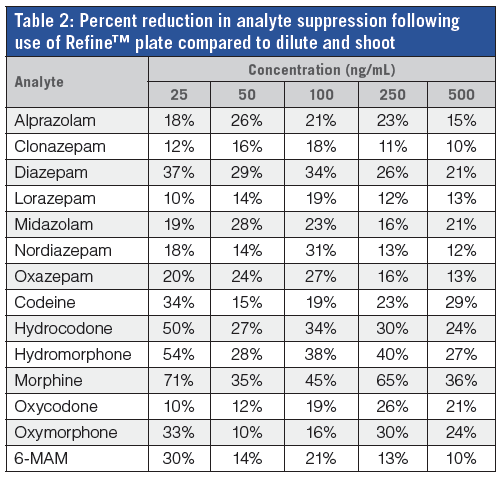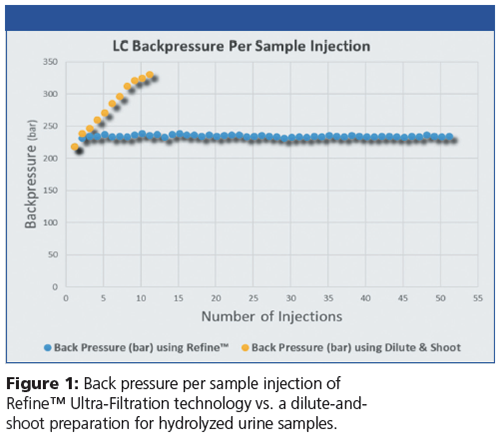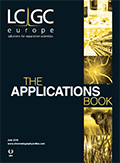In-Well Hydrolysis Using UCT’s Refine™ Ultra-Filtration Technology
The Application Notebook
UCT’s Refine™ Ultra-Filtration Technology allows for sample precipitation and filtration to occur simultaneously in the individual column or well. A novel, hydrophobically treated, submicrometer frit combination facilitates the removal of sample proteins without a complicated extraction.
UCT’s Refine™ Ultra-Filtration Technology allows for sample precipitation and filtration to occur simultaneously in the individual column or well. A novel, hydrophobically treated, submicrometer frit combination facilitates the removal of sample proteins without a complicated extraction.

Procedure
Sample Extraction:
a) Place a collection plate under the Refine™ Ultra-Filtration Plate.
b) Add 250 µL of urine and 250 µL Abalonase Ultra Enzyme working solution.
c) Hydrolyze for 30 min at 55°.
d) Further dilute sample by adding 500 µL D.I. H2O.
e) Mix the sample. This can be executed via vortexing at maximum speed or multiple pipette aspirations and dispenses.
f) Filter the sample using one of the following techniques:
1. Centrifuge: For 5 min at 500 g or until filtrate is collected.
2. Vacuum: Apply vacuum at ~20” of Hg for up to 5 min or until filtrate is collected.
3. Positive pressure: Apply 2–5 psi using positive pressure for up to 5 min or until filtrate is collected.
Instrumental
LC–MS/MS: Agilent™ 1200 HPLC and AB Sciex™ 4000 Q Trap (MS/MS)
Column: 100 × 2.1 mm, 3-μm UCT Selectra® DA HPLC column
Guard column: 10 × 2.1, 3-μm UCT Selectra® DA guard column
Injection volume: 10 μL
Mobile phase A: D.I. H2O + 0.1% formic acid
Mobile phase B: Methanol + 0.1% formic acid
Column flow rate: 0.30 mL/min
Results


Conclusion
Using the above procedure, the Refine™ Ultra-Filtration technology allowed for a reduction in instrumental back pressure and removal of unwanted matrix components in urine samples. Overall, this allows for an end user to have enhanced analyte selectivity and an increase in HPLC and UHPLC column life.

UCT, LLC
2731 Bartram Rd., Bristol, Pennsylvania 19007, USA
Tel.: (800) 385 3153
Website: www.unitedchem.com

MALDI Guided SpatialOMx® Uncovers Proteomic Profiles in Tumor Subpopulations of Breast Cancer
September 1st 2020The timsTOF fleX system bridges a current gap by providing MALDI Imaging and in-depth proteomics analysis in just one instrument. The instrument offers all benefits of a timsTOF Pro for time-efficient and sensitive proteomics, combined with a high-resolution MALDI source and stage. Using PASEF technology, it is possible to retrieve high protein ID rates with small sample amounts. Here we present the new SpatialOMx® workflow to identify distinct proteomic profiles for different tumor subpopulations in breast cancer as an example for this powerful approach.





